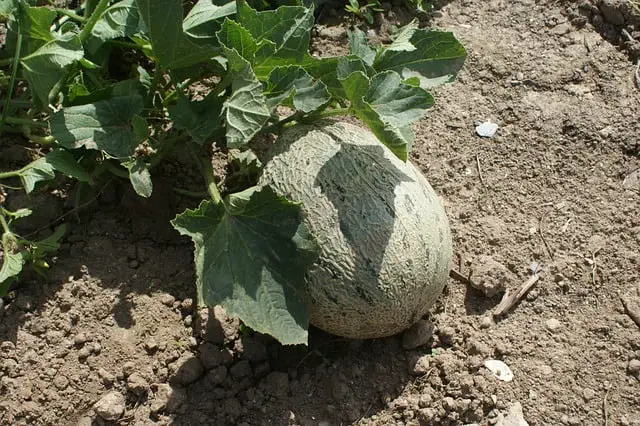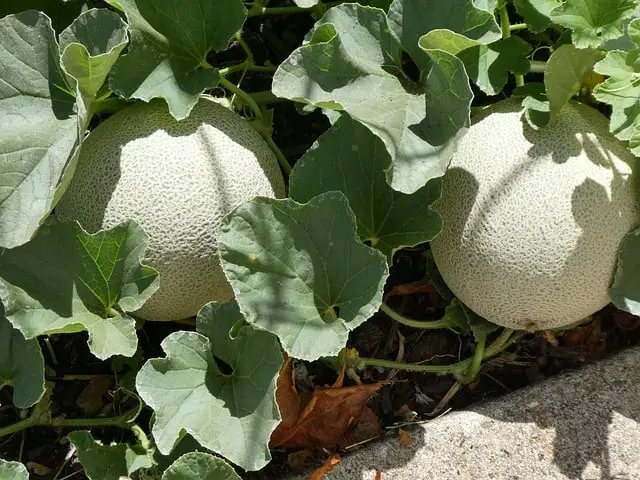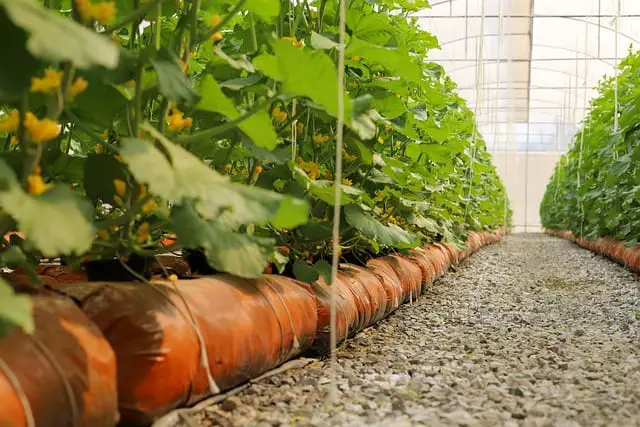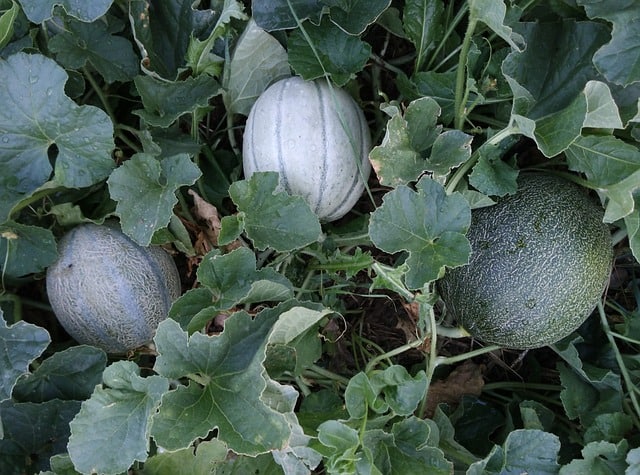Cantaloupes are among the most famous and tasty varieties of melons. They grow in almost every part of the world and are very simple to cultivate. Cantaloupes can be eaten both raw and cooked.
With proper care, cantaloupe plants can produce melons with a juicy and sweet flavor that is enjoyed by many people around the world. Can you guess how many cantaloupes you get per plant? Read on to see if you guessed right!
How Many Cantaloupes Per Plant?
A cantaloupe vine is a yearly plant that has many great companion plants. You will have to plant a new cantaloupe vine every year since they die after they’re done bearing fruits.
After planting the vine, it will take around 3 months for the vine to bear the first fruit. A cantaloupe vine can bear up to you almost two cantaloupes per year.
However, depending on the species of the cantaloupe, they can produce more or less. There are many cantaloupe species depending on their place of origin, such as the Japanese cantaloupes, French cantaloupes, and Galia cantaloupes.
Keep in mind that when we say ‘cantaloupes’ we actually mean muskmelons. This is because true cantaloupes have smoother skin and are more difficult to grow. Since actual cantaloupes are rare in the US, we will continue to call muskmelons cantaloupes for the rest of the article.
How Do Cantaloupes Taste?
Cantaloupes have a rich texture with a sweet flavor. Depending on the species of your cantaloupe the taste can differ a bit but generally, all cantaloupes are sweet. They also have plenty of nutritional fiber as well as vitamins A and C.
When Do Cantaloupe Vines Fruit?
Cantaloupe vines can bear fruit at any time of the year. However, they don’t like frost and cold temperatures. As long as they are grown in a warm temperature with plenty of direct sunlight, they will produce fruits.
The number of cantaloupes a vine produces depends on the variety of the cantaloupe. Some varieties like the Athena and home-run cantaloupes can have two melons per vine or more. Still, the actual number of cantaloupes a vine can produce depends on how well it is grown.
How Do You Grow Cantaloupes?

Cantaloupes prefer warm weather, if you’re planning to grow cantaloupes, you should start right before spring. Ideally, you should plant your cantaloupes a few weeks after the last frost day of winter. Very cold temperatures harm cantaloupe vines since they’re not frost-hardy.
Here’s what you need to do to grow your cantaloupes.
1. Preparation
Before you begin planting your cantaloupe vines, you need to decide how you want to grow your cantaloupes. Cantaloupe vines can be grown both on the ground as well as on trellises. Growing your cantaloupe vine on a trellis is better than growing it on the ground.
Cantaloupe vines love to climb so growing them on a trellis isn’t very difficult. The vines are strong enough to bear the weight of the melons so you don’t have to worry about providing extra support to the fruits.
One of the main advantages of using a trellis is that it makes it easier to water the vine while keeping the leaves dry. Wet leaves are vulnerable to fungal diseases like powdery mildew that can spread and damage your plant.
Cantaloupes prefer loamy soil rich in nutrients with good drainage. You can add a layer of compost on top to help the plant grow better. It’s a good idea to fertilize the soil before planting cantaloupes if you have grown other plants or cantaloupes in the same spot before.
2. Planting
There are two ways to grow a cantaloupe vine, through seeds or transplant. If you choose to your transplants from a nursery, you can plant them in your garden straight away. However, if you choose to use the seeds, you will first need to germinate them indoors for around 10 days.
You can use plant-growing trays to germinate the seeds. Cantaloupe seeds prefer temperatures above 75°F. Water the seeds and wait until the seed turns into saplings with a few leaves before transplanting them into your garden.
Be careful not to disturb the roots when transplanting the saplings. Cantaloupe roots are very sensitive. Disturbing them can send them into shock and kill the plant. Once the plant has grown a bit, you can add some mulch to help protect the vine from insects and keep the soil fertile.
3. Watering and Pollination

Cantaloupes need to be watered about 1-2 inches per week. Well-drained soil will help the cantaloupes grow healthier. It is recommended to water the cantaloupes less when they’re nearly ripe. This will make the vine store more sugar in the melon, making it sweeter.
Once your cantaloupe vine has grown enough, the flowers will begin to bloom. Male flowers will bloom first while female flowers will bloom after a week or two.
The flowers need to be pollinated before your vine can produce a melon. Bees and other pollinators are especially helpful for this. If your garden does not have bees, you might have to hand-pollinate the flowers.
4. Ripening and Harvest
Once the young melon fruit appears, it will grow in size over the next 2-3 months. Depending on the variety of your cantaloupe, your vine can have two melons or more. Wait till the fruit is fully ripened before you harvest it.
Growing the cantaloupe vine on a trellis comes in handy here since a ripened cantaloupe comes off its stem easily. If you have to tug or apply some force to separate the melon from the stem, it isn’t ripened.
Cantaloupes can ripen more on the shelf but they will not get any sweeter. This is why it’s better to water the cantaloupe less during the week leading up to the harvest.
How to Tell if a Cantaloupe Is Ripe?

Harvesting the cantaloupes at the right time is important to get the best taste. A ripe cantaloupe has signs that can help you know when it is ready to be harvested.
1. Color
Unripe cantaloupes are gray or green in color. As a cantaloupe matures and ripens, its skin will develop a pale yellowish hue. If you’re growing cantaloupes on the ground, be sure to lift the melon and check below. Sometimes the cantaloupe can begin to ripen from below and become a target to pests.
2. Attachment to the Stem
The stem of the cantaloupe is strong enough for the cantaloupe to stay attached to the vine until it is ripe. As the cantaloupe ripens, the stem gradually loosens up and gives way. A ripe cantaloupe will slip off the stem without any effort.
If you have to tug or apply force to remove the cantaloupe, it was not ripe yet. However, if you wait too long, the cantaloupe will over-ripen and fall to the ground. It is recommended to regularly check if the cantaloupe is ready to be plucked once it has been more than 50 days since the melon bud appeared.
3. Scent
Unripe cantaloupes have no aroma. Ripe cantaloupes will have a sweet sugary aroma that you can smell. Tapping on an unripe cantaloupe will also make a hollow, watery sound. If your cantaloupe becomes over-ripened, it will give off a mushy smell that can be unpleasant for some.
4. Vines
The cantaloupe vines form tendrils around the melon as it matures. These tendrils are usually green for an unripe cantaloupe. However, they turn brown or yellow as the cantaloupe ripens. The skin of the cantaloupe will also become rugged as it ripens, while it will be smooth for an unripe melon.
Is it Better to Use Cantaloupe Transplants or Seeds?

Cantaloupe transplants grow quickly and you can purchase them from a nursery. Whereas the seeds need to be planted in a plant-growing tray for germination before they can be transplanted into the garden.
It’s better to use transplants if you want to grow cantaloupes quickly. However, seeds cost a lot less than transplants and after the initial 10-15 days of germination, you can treat them as transplant saplings.
Keep in mind that both the seeds and the transplants are very sensitive so you have to handle them with care. Using seeds gives you more room for error since you will get more saplings.
How Do I Store Ripe Cantaloupe?
After plucking a cantaloupe, you can usually store it indoors at room temperature for up to two days to let it ripen completely. Once it is fully ripened, you can store it in the refrigerator.
Refrigeration can increase the shelf life of the cantaloupe by five days. However, if you have already cut the cantaloupe into slices, you can store them in the fridge for up to three days.
More on this category:
Outro
Cantaloupe vines can produce two or more cantaloupes depending on how well they were taken care of. As long as you keep the pests away from your garden and provide your cantaloupe vine with all the essentials, it will give you a delicious cantaloupe. Just remember that you’ll need to replant them next year if you want more.
Frequently Asked Questions
Do cantaloupes grow back every year?
No, cantaloupes are annual vines that die after the cantaloupes ripen. You will have to plant new seeds for the next season for more cantaloupes.
What’s the best month to plant cantaloupe?
You can begin preparing your cantaloupe seeds for planting in February a few weeks after the last frost day of winter. Cantaloupes need temperatures warmer than 75°F to thrive so only plant them in your garden once the temperature warms up a bit.
Should I prune cantaloupe?
You shouldn’t prune the leaves of your cantaloupe vines since it might lead to more bland cantaloupes. However, you can choose to prune extra cantaloupe fruits on the vine. The fewer fruits there are per vine, the sweeter the fruit becomes. Prune only if you want less, but sweeter, fruits.

Hey, I’m Lisa and I’ve been an avid gardener for over 30 years. I love writing, talking and living in the garden! Feel free to connect with me on my socials below

